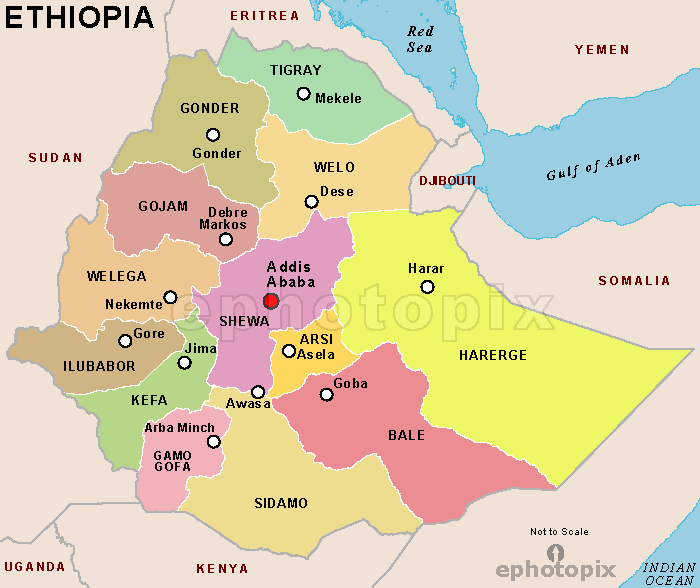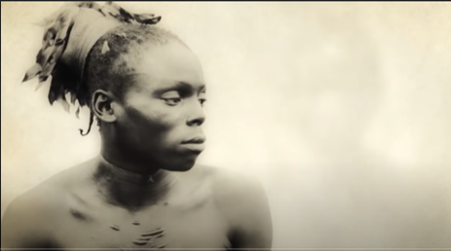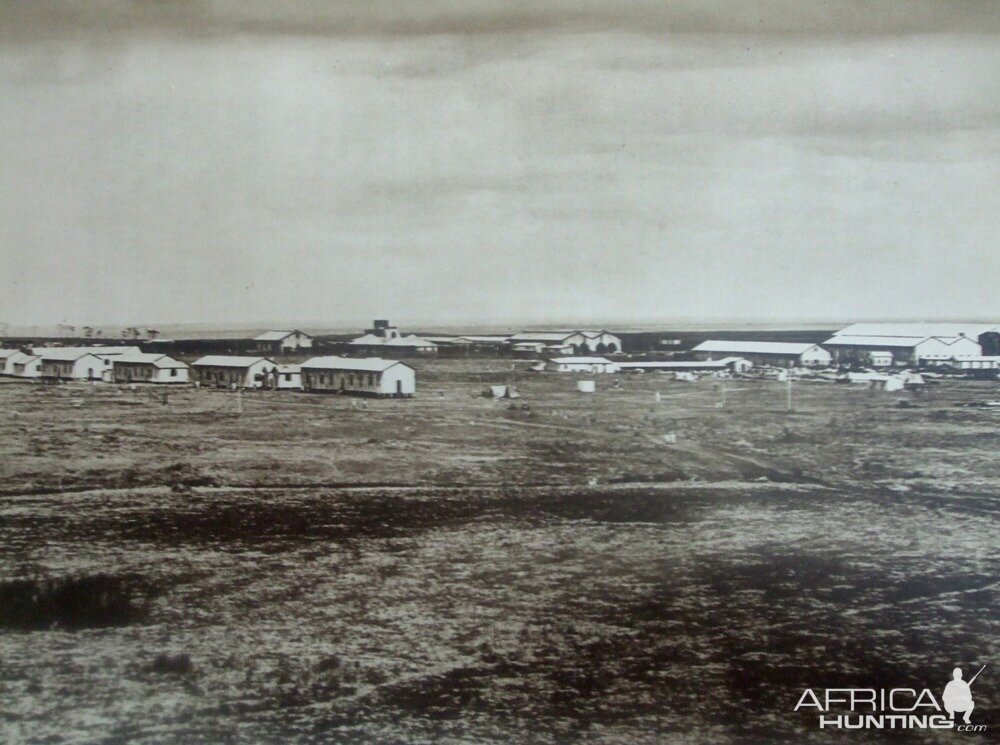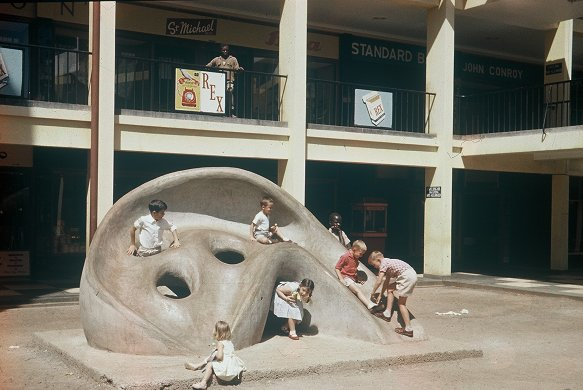The Postal Corporation of Kenya, PCK or Posta, is the oldest parastatal in Kenya having been founded in 1901 as the Postal Services of British EA (PSBEA).
Over the years however, Posta has faced unending troubles due to corruption and mismanagement.
1/
---A postal thread---
Over the years however, Posta has faced unending troubles due to corruption and mismanagement.
1/
---A postal thread---

2/
In 1910, PSBEA offered savings accounts and later evolved into Postbank Credit.
In 1994, the bank collapsed with Sh3.8bn in deposits and Sh3.6bn in loans, due to bad debts owed by connected individuals like Cyrus Jirongo.
businessdailyafrica.com/news/Jirongo-s….
In 1910, PSBEA offered savings accounts and later evolved into Postbank Credit.
In 1994, the bank collapsed with Sh3.8bn in deposits and Sh3.6bn in loans, due to bad debts owed by connected individuals like Cyrus Jirongo.
businessdailyafrica.com/news/Jirongo-s….

3/
By 1930 PSBEA was earning revenues of £222,115 against expenses of £181,267 - i.e. it was profitable.
There were even efforts to grow African customers for the Post Office Savings bank. They numbered 1,187 at the time.
libsysdigi.library.illinois.edu/ilharvest/Afri…
[GPO Mombasa built 1890]
By 1930 PSBEA was earning revenues of £222,115 against expenses of £181,267 - i.e. it was profitable.
There were even efforts to grow African customers for the Post Office Savings bank. They numbered 1,187 at the time.
libsysdigi.library.illinois.edu/ilharvest/Afri…
[GPO Mombasa built 1890]

4/
In 2008, Posta made Sh13.9bn in revenues but by 2017, these had fallen to Sh2.5bn, down 82% in ten years as mail volumes declined from 102mn in 2005 to 47mn in 2018.
Technology had taken over most bread and butter services offered by the corporation.
businessdailyafrica.com/corporate/comp…
In 2008, Posta made Sh13.9bn in revenues but by 2017, these had fallen to Sh2.5bn, down 82% in ten years as mail volumes declined from 102mn in 2005 to 47mn in 2018.
Technology had taken over most bread and butter services offered by the corporation.
businessdailyafrica.com/corporate/comp…
5/
Curiously though, from 2006 to 2010, the number of unregistered letters sent by Kenyans rose 56%, from 69mn to 108mn before dropping 38% to 67mn in 2015.
It is not immediately clear why mail numbers increased during that period.
nation.africa/kenya/newsplex…
Curiously though, from 2006 to 2010, the number of unregistered letters sent by Kenyans rose 56%, from 69mn to 108mn before dropping 38% to 67mn in 2015.
It is not immediately clear why mail numbers increased during that period.
nation.africa/kenya/newsplex…
6/
Letter box rentals also rose 18% over the nine years from 2006 to 2015, when they numbered 323,000 and have since risen to the current level of 375,000, of a total of 552,000 available boxes.
Letter box rentals also rose 18% over the nine years from 2006 to 2015, when they numbered 323,000 and have since risen to the current level of 375,000, of a total of 552,000 available boxes.

7/
In 2006, 1.6mn money orders worth Sh4.5bn were paid out, but by 2015, volumes had plunged 69% to 499,000 orders, worth Sh3.2bn. Value per order was higher - Sh6,412 vs Sh2,812.
That year (2015), mobile money services were used to transfer Sh2.8tn across the country.
In 2006, 1.6mn money orders worth Sh4.5bn were paid out, but by 2015, volumes had plunged 69% to 499,000 orders, worth Sh3.2bn. Value per order was higher - Sh6,412 vs Sh2,812.
That year (2015), mobile money services were used to transfer Sh2.8tn across the country.

8/
20 years ago, Posta had 914 outlets across the country but by 2019, that figure had dropped to 585, even as last mile online order deliveries continues to be a pain point for many e-commerce and courier operators.
What happened to the 329 closed sites is a whole other story.
20 years ago, Posta had 914 outlets across the country but by 2019, that figure had dropped to 585, even as last mile online order deliveries continues to be a pain point for many e-commerce and courier operators.
What happened to the 329 closed sites is a whole other story.

9/
The parastatal has tried scores of ideas to remain relevant but most of these have been corruption-prone or poorly executed.
One example was VSAT linkages for all post offices in the country, which later turned out to be part of Anglo-Leasing.
The parastatal has tried scores of ideas to remain relevant but most of these have been corruption-prone or poorly executed.
One example was VSAT linkages for all post offices in the country, which later turned out to be part of Anglo-Leasing.
https://twitter.com/surambaya/status/1280712701782581250
10/
Another example was a bus line that was dropped as fast as it was set up.
Posta piloted a two-bus passenger service, Posta Liner, between Nairobi and Busia under the funding and guidance of Universal Postal Union in 2016, to no great success.
businessdailyafrica.com/economy/Ailing…
Another example was a bus line that was dropped as fast as it was set up.
Posta piloted a two-bus passenger service, Posta Liner, between Nairobi and Busia under the funding and guidance of Universal Postal Union in 2016, to no great success.
businessdailyafrica.com/economy/Ailing…

11/
Posta also ventured into clearing and forwarding to enable it finance its operations in the wake of disruption by new technologies.
Interestingly, the corporation bought 22 vehicles worth Sh56mn to facilitate the clearing service.
businessdailyafrica.com/news/539546-47…
Posta also ventured into clearing and forwarding to enable it finance its operations in the wake of disruption by new technologies.
Interestingly, the corporation bought 22 vehicles worth Sh56mn to facilitate the clearing service.
businessdailyafrica.com/news/539546-47…
12/
In 2018, Posta considered getting into partnership with Amazon and it announced that Amazon officials were set to visit the country later in October of the same year.
No one knows exactly how that went but there seems to be no partnership inked.
businessdailyafrica.com/corporate/comp…
In 2018, Posta considered getting into partnership with Amazon and it announced that Amazon officials were set to visit the country later in October of the same year.
No one knows exactly how that went but there seems to be no partnership inked.
businessdailyafrica.com/corporate/comp…
13/
Posta even increased its rates in 2017, the firs time in ten years to try and shore up revenues, without a commensurate upgrade in services offerings.
In yet another desperate act, Posta increased rates 65% in August 2020.
standardmedia.co.ke/business/artic…
businessdailyafrica.com/corporate/Post…
Posta even increased its rates in 2017, the firs time in ten years to try and shore up revenues, without a commensurate upgrade in services offerings.
In yet another desperate act, Posta increased rates 65% in August 2020.
standardmedia.co.ke/business/artic…
businessdailyafrica.com/corporate/Post…
14/
In November 2019, Posta partnered with Safaricom and MPost to launch digital post office boxes targeting 5 million customers countrywide.
It remains to be seen how this will pan out and what sign-ups are looking like.
the-star.co.ke/news/2019-11-2…
In November 2019, Posta partnered with Safaricom and MPost to launch digital post office boxes targeting 5 million customers countrywide.
It remains to be seen how this will pan out and what sign-ups are looking like.
the-star.co.ke/news/2019-11-2…
15/
The corporation, as expected, also suffers from shameless plunder.
In Dec 2019, Posta was cited for failure to pay Sh159.06mn meant for onward transmission to orphans and persons with disabilities in the year to June 2015.
nation.africa/kenya/business…
pd.co.ke/news/national/…
The corporation, as expected, also suffers from shameless plunder.
In Dec 2019, Posta was cited for failure to pay Sh159.06mn meant for onward transmission to orphans and persons with disabilities in the year to June 2015.
nation.africa/kenya/business…
pd.co.ke/news/national/…
16/
Apart from 10 properties that the Auditor General singled out as having been grabbed, there's another 45 properties valued at Sh386mn (book, not market value), for which the auditor notes ownership cannot be established.
oagkenya.go.ke/getmedia/0b81b…
Apart from 10 properties that the Auditor General singled out as having been grabbed, there's another 45 properties valued at Sh386mn (book, not market value), for which the auditor notes ownership cannot be established.
oagkenya.go.ke/getmedia/0b81b…

17/
Over the three years to 2019, the parastatal suffered losses to the tune of Sh3.8 billion and in the just-ended financial year 2019/20, Posta made Sh705.8mn in losses against revenues of Sh2.3bn.
Accumulated losses were at Sh5.9bn as of June 2020.
pd.co.ke/business/union…
Over the three years to 2019, the parastatal suffered losses to the tune of Sh3.8 billion and in the just-ended financial year 2019/20, Posta made Sh705.8mn in losses against revenues of Sh2.3bn.
Accumulated losses were at Sh5.9bn as of June 2020.
pd.co.ke/business/union…
18/
Then there are organisational challenges
Posta spends Sh1.7bn on wages for 3,200 employees, or 65% of revenue and has not paid salaries since March 2020.
With about 40% of employees aged 55 years and above, the pension liability just keeps growing.
businessdailyafrica.com/corporate/1-20…
Then there are organisational challenges
Posta spends Sh1.7bn on wages for 3,200 employees, or 65% of revenue and has not paid salaries since March 2020.
With about 40% of employees aged 55 years and above, the pension liability just keeps growing.
businessdailyafrica.com/corporate/1-20…
19/
In August 2020, Postmaster David Kagwe noted that revenues had fallen 75% due to Covid-19 and needed a Sh1bn bailout.
On Sep 22, 2020, treasury approved a Sh810mn bailout.
Posta owes about Sh4.9bn to staff and suppliers.
businessdailyafrica.com/bd/corporate/c…
standardmedia.co.ke/business/artic…
In August 2020, Postmaster David Kagwe noted that revenues had fallen 75% due to Covid-19 and needed a Sh1bn bailout.
On Sep 22, 2020, treasury approved a Sh810mn bailout.
Posta owes about Sh4.9bn to staff and suppliers.
businessdailyafrica.com/bd/corporate/c…
standardmedia.co.ke/business/artic…
20/
Posta's Strategic Plan for 2020/21 is a study in hopelessness with an annual revenue growth target of 3%, below current inflation levels, even as it aims to grow the customer base by 15% annually.
posta.co.ke/info/docs/Stra…
Posta's Strategic Plan for 2020/21 is a study in hopelessness with an annual revenue growth target of 3%, below current inflation levels, even as it aims to grow the customer base by 15% annually.
posta.co.ke/info/docs/Stra…
21/
A perusal of Posta's 2017 financials reveals worrying numbers:
Payables of Sh6.4bn with Sh1.5bn owed to Postbank
Receivables of Sh1.3bn with 50% owed by "foreign administration"
Staff Costs of Sh2.29bn vs revenues of Sh2.55bn
Negative operating cashflows of Sh400mn+/yr
A perusal of Posta's 2017 financials reveals worrying numbers:
Payables of Sh6.4bn with Sh1.5bn owed to Postbank
Receivables of Sh1.3bn with 50% owed by "foreign administration"
Staff Costs of Sh2.29bn vs revenues of Sh2.55bn
Negative operating cashflows of Sh400mn+/yr
22/
Posta's true value, however, lies in its real estate portfolio, where it rents over 40 properties across the countries.
These properties brought in Sh255mn in 2016/17 or just over Sh20mn a month.
Posta's true value, however, lies in its real estate portfolio, where it rents over 40 properties across the countries.
These properties brought in Sh255mn in 2016/17 or just over Sh20mn a month.

23/
A spot-check of these assets showed the tenants had converted most the property into hotels, kiosks and apparel shops.
At Tom Mboya post office, a new hotel has come up on the second floor of the building, with the tenant making Sh1.4mn a month.
pd.co.ke/news/national/…
A spot-check of these assets showed the tenants had converted most the property into hotels, kiosks and apparel shops.
At Tom Mboya post office, a new hotel has come up on the second floor of the building, with the tenant making Sh1.4mn a month.
pd.co.ke/news/national/…
24/
The auditor also pointed out that Posta leased a prime parcel of property at Yaya Centre in Nairobi Kilimani area for a song.
A tenant, who is said to be a former Postmaster General at the corporation, is reportedly paying a meagre Sh250,000 a month for the property.
The auditor also pointed out that Posta leased a prime parcel of property at Yaya Centre in Nairobi Kilimani area for a song.
A tenant, who is said to be a former Postmaster General at the corporation, is reportedly paying a meagre Sh250,000 a month for the property.

25/
When most Kenyan parastatals were formed or expanded, they were allocated parcels of land in places now deemed to be prime/high-end areas.
Any move other than a market-value strategic disposal or an operational overhaul is likely to be targeted at Posta's properties.
When most Kenyan parastatals were formed or expanded, they were allocated parcels of land in places now deemed to be prime/high-end areas.
Any move other than a market-value strategic disposal or an operational overhaul is likely to be targeted at Posta's properties.

• • •
Missing some Tweet in this thread? You can try to
force a refresh
















